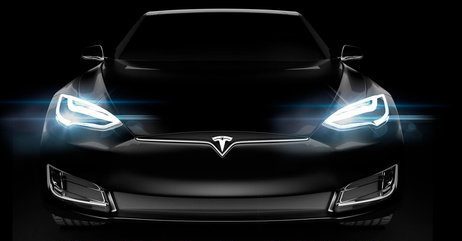By David Silverberg | Washington Post
Journalist Hamish McKenzie spent a year working for Tesla, but he makes clear at the outset of his book, “Insane Mode: How Elon Musk’s Tesla Sparked an Electric Revolution to End the Age of Oil,” that this is no insider’s story. “I will leave that work to the gossip blogs,” he writes. Instead, he seeks to spotlight the company’s strategy in the context of the auto industry’s identity crisis. He interviews auto experts and electric-car CEOs to illuminate how Tesla paved the way for imitators seeking a foothold in the clean-energy game.
McKenzie introduces us to Musk, the mercurial entrepreneur who was bullied in South Africa and later won acclaim as a co-founder of PayPal; that success plumped him with enough capital to launch both Tesla and SpaceX, his aerospace manufacturing and transportation company. In 2018 Musk’s unpredictable nature was center stage: In August he shocked investors by claiming on Twitter that he had financing to take Tesla private, an assertion that Musk later said was a joke but that sparked a Securities and Exchange Commission investigation resulting in his departure as board chairman. In “Insane Mode,” we’re treated to the wildly quotable Musk professing his oft-reported mottos, such as: “Starting a company is like eating glass and staring into the abyss.”
Musk, McKenzie argues, is driven not by profits but by upending the auto infrastructure across the world. But it’s no easy task to enter the auto industry. In a pithy few pages, McKenzie outlines the roadblocks ahead for anyone brazen enough to try: If a newcomer can actually fund engineers, lawyers and designers, and efficiently manufacture a product on a massive assembly line, then that newbie “can expect skepticism, hesitation, and in some cases active disparagement” in the quest “to reach more customers. Get ready to do a lot of explaining.”
Certainly Musk has succeeded where others have not. In October Tesla pulled in a profit for the first time in two years. By contrast, Faraday Future, based in Los Angeles and funded by a Chinese billionaire, so far has little to show for its impressive ambitions. Telsa, however, hasn’t been immune to missteps. The company has repeatedly missed production targets, leaving consumers in limbo waiting for their vehicles to roll off the line. The company even had to get rid of some color options for its Model 3 sedan to streamline production. In China, a Tesla oversight opened the door for competitors to cater to the country’s car enthusiasts. The company initially failed to take into account wealthy Chinese consumers’ unique tastes. “In particular,” McKenzie writes, “the back seats in the first Model S delivered to China were bench-like and uncomfortable, which was a problem in China, where wealthy citizens often prefer to be driven by chauffeurs.”

McKenzie sometimes veers into Tesla cheerleading by stressing the company’s hits over its misses. But the reader also benefits from the author’s exhaustive research, which delivers a fairly nuanced view of how big automakers are trying to keep up with Tesla’s innovations. McKenzie portrays the technological advantages Telsa has over larger companies with its cutting-edge software for auto-driving. General Motors, Ford and others, meanwhile, are known for their sturdy designs.
McKenzie writes with breeziness and avoids talking down to readers or loading on too much insider detail. He apparently didn’t interview Musk; the quotes in the book come from company releases, news conferences and media reports. If McKenzie had been able to infuse his tale with original Musk comments, the book would have further stood apart from other works on Tesla’s impact.
Still, McKenzie puts us there at a Tesla launch or an interview with a Chinese CEO, even if his metaphors at times come across as head-scratching. Looking over Faraday Future’s first car design, he writes, “As far as SUVs go, this thing is beautiful, like a machine-gun bullet pregnant with twins.”
McKenzie clearly sides with Tesla in its battles against conservative billionaires like the Koch brothers, whose oil industry stakes don’t make them friends of the electric-car industry. McKenzie disparages the Kochs’ legacy. “Blocking the passage of a carbon tax supported by environmentalists and oil companies is one such legacy,” he writes. “Creating confusion about clean-energy subsidies and slowing the transition to electric mobility could be another.”
McKenzie has delivered a narrative that both fascinates and frustrates: Musk’s passion for a clean-energy future is contagious, but at the same time it’s painful to see the struggle of the electric-car industry to widen its market and win over more consumers. “Insane Mode” will leave you wondering how different our roads would look if we embraced a technology that almost seems inevitable, batteries included.
Silverberg is a freelance journalist living in Toronto.
Insane Mode: How Elon Musk’s Tesla Sparked an Electric Revolution to End the Age of Oil
By Hamish McKenzie
Dutton. 294 pp. $30










